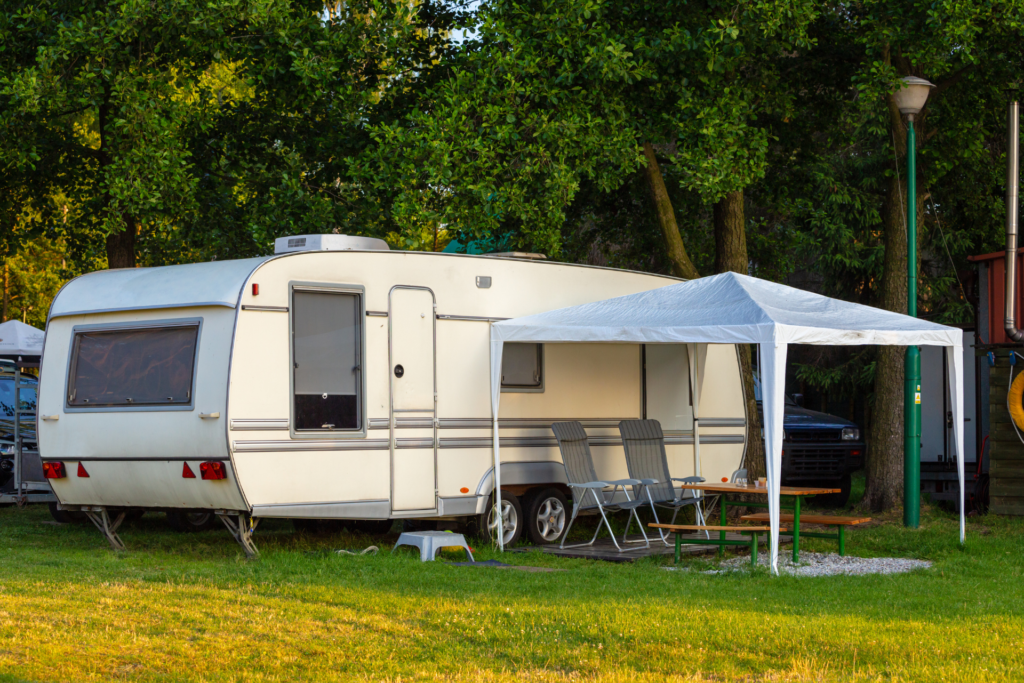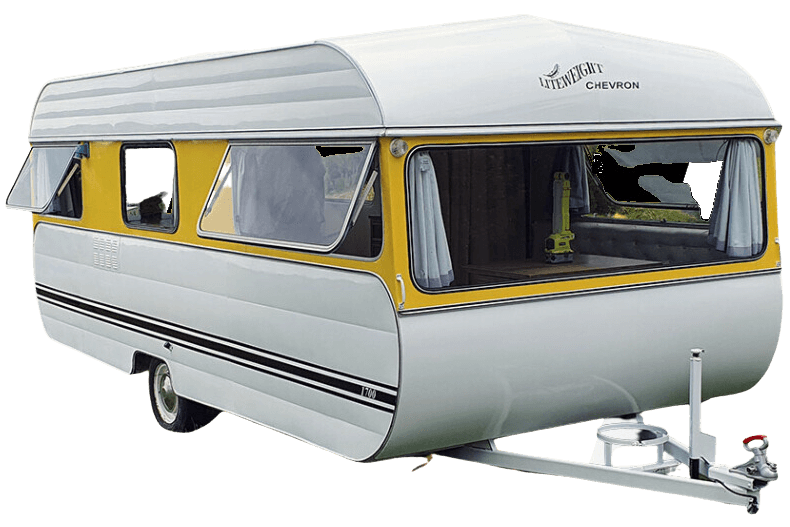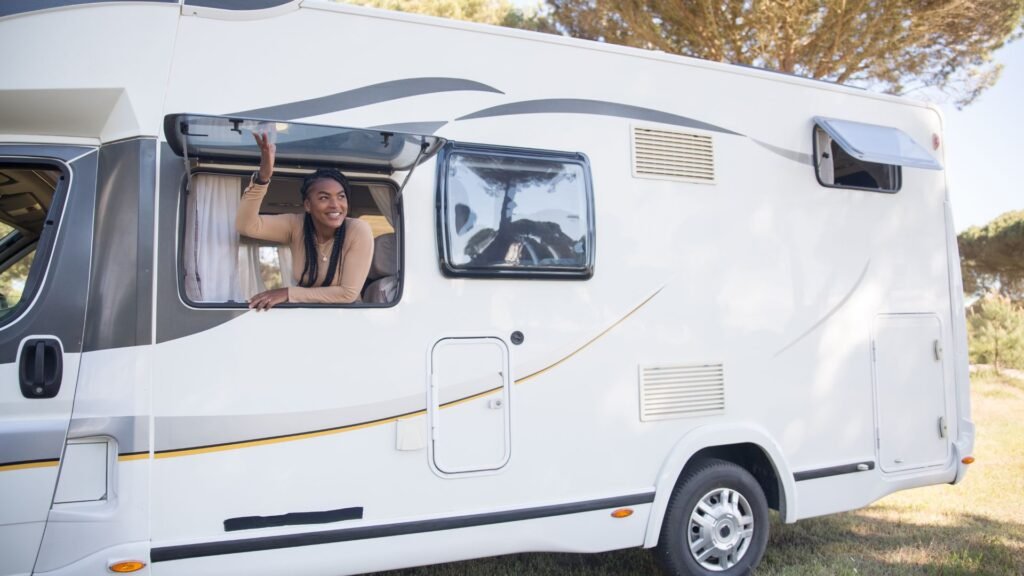Welcome to the ultimate guide on the best way to sell a caravan in New Zealand. Whether you’re looking to upgrade, downsize, or simply part ways with your beloved caravan, navigating the process of selling can feel daunting. Fortunately, it doesn’t have to be. In this guide, we’ll take you through everything you need to know from preparing your caravan for sale to setting a competitive price, choosing the right platform, and finalizing the deal. Whether you’re a first-time seller or have sold vehicles before, our tips will help you get the best price and make the process as smooth as possible. Let’s get started on your journey to selling your caravan with confidence.
The best way to sell a caravan in New Zealand involves preparing it for sale by ensuring it’s clean, well-maintained, and roadworthy. Next, set a competitive price by researching similar models in the market. List your caravan on popular platforms like TradeMe or Facebook Marketplace, and include high-quality photos and a detailed description. Respond promptly to inquiries, negotiate professionally, and finalize the sale by ensuring proper documentation, including a valid WOF and registration papers.
Preparing Your Caravan For Sale
When it comes to selling your caravan, presentation is everything. Whether you’re upgrading or simply moving on, ensuring your caravan is in the best possible condition will help you attract buyers quickly and get the best price. In this section, we will guide you through the most important steps to prepare your caravan for sale.
Clean and Presentable
First impressions are critical when selling any vehicle, and your caravan is no exception. A clean, well-maintained caravan is not only more visually appealing but also signals to potential buyers that it has been cared for, making it easier to sell. Buyers are more likely to trust a caravan that looks and smells fresh than one that shows signs of neglect.
Why Cleaning Matters
A spotless caravan makes a lasting first impression. Before potential buyers even start asking questions about the caravan’s condition, its cleanliness will set the tone. A caravan with dirt, stains, or unpleasant odors might leave buyers concerned about hidden issues, while a sparkling clean one will project reliability. Here are the tips for deep cleaning.
- Exterior: Wash the exterior thoroughly, paying attention to the roof, windows, and awnings. Use the appropriate cleaning products to remove any built-up grime or moss that may have accumulated over time.
- Interior: Start with a detailed vacuuming of all carpets and upholstery, ensuring to remove any debris or crumbs. Wipe down all surfaces, including cupboards, countertops, and appliances. Clean the windows and mirrors for a streak-free finish.
- Common Issues to Address: Deal with stains on upholstery, curtains, or cushions, and make sure to eliminate any lingering odors. If your caravan has been stored for a while, consider using air fresheners or even steam-cleaning fabrics to ensure a fresh scent throughout. Fix any loose or damaged parts like broken hinges, torn fabric, or worn-out seals.
By taking the time to deep clean, you’re not only making the caravan look great but also helping potential buyers see the value in your well-cared-for vehicle.
Servicing and Repairs
Before listing your caravan for sale, it’s essential to ensure it’s in top mechanical shape. This not only reassures potential buyers but can also add significant value to the sale price.
- Why a Current WOF is Crucial: Having a current Warrant of Fitness (WOF) is a must. A caravan with an up-to-date WOF tells buyers that it’s safe and roadworthy, giving them peace of mind and potentially speeding up the sale. Buyers are more likely to purchase a caravan they can take on the road immediately rather than one that requires an inspection or repairs.
- Small Repairs Add Value: Fixing minor issues can go a long way in increasing the appeal of your caravan. Whether it’s replacing a broken taillight, fixing a leaky faucet, or patching up minor bodywork, these small fixes can have a big impact. Not only do they improve the overall look and function of your caravan, but they also eliminate buyer concerns about needing to invest more money after purchase.
- Major Repairs: Deciding whether to invest in major repairs, such as replacing a roof or overhauling the electrical system, can be tricky. If the repairs are likely to significantly increase the sale price, they may be worth it. However, if the cost of repairs is too high compared to the potential sale price, it might be better to leave these tasks to the buyer, possibly negotiating the price to account for the necessary work.
Ultimately, the decision depends on the condition of your caravan and how much you’re willing to invest to increase its appeal. For many sellers, addressing small issues while being transparent about larger repairs is a cost-effective way to approach the sale.
Declutter and Depersonalize
Creating a neutral, inviting space is crucial when showing your caravan to potential buyers. Much like selling a home, you want the buyer to be able to imagine themselves using the space. This is hard to do if the caravan is cluttered with personal items.
Why Decluttering Matters
Removing your personal belongings opens up the space and makes it easier for the buyer to picture themselves and their family in the caravan. It also makes the space look larger and more organized, which is a significant selling point for many buyers. Tips on how to declutter effectively.
- Personal Items: Remove any family photos, souvenirs, or personal decorations. While these items may make your caravan feel homely, they distract buyers from imagining the space as their own.
- Storage Spaces: Empty out cupboards, drawers, and storage compartments, leaving only a few neutral items to show the space’s potential. Buyers will appreciate the opportunity to see how much storage is available for their belongings.
- Maximizing Space: Consider rearranging furniture or removing bulky items that may make the space feel cramped. The more open and spacious your caravan feels, the more attractive it will be to potential buyers.
By depersonalizing and decluttering, you allow buyers to connect with the caravan on an emotional level, making it easier for them to imagine their own adventures inside.
Preparing your caravan for sale doesn’t have to be an overwhelming process, but it does require attention to detail. By focusing on cleanliness, ensuring mechanical soundness, and creating an open, inviting atmosphere, you’ll increase your chances of a quick sale at a good price. Remember, first impressions are everything, and the better your caravan looks and feels, the more appealing it will be to potential buyers.

Setting A Competitive Price For Your Caravan in New Zealand
When it comes to selling your caravan in New Zealand, pricing is one of the most critical aspects. The price you set will determine how quickly you can find a buyer and how much interest your listing generates. A well-researched, competitive price ensures you maximize your chances of selling without losing value. Let’s dive into the process step by step to help you arrive at the perfect price.
Research the Market
The first and most important step in setting a competitive price for your caravan is to research the current market. By doing so, you can establish a baseline for what similar caravans are selling for and make adjustments based on your specific circumstances.
Where to Check Current Caravan Prices in New Zealand
To get a good sense of caravan prices, start by browsing platforms like Trade Me, Facebook Marketplace, and visiting local caravan dealers’ websites. These platforms are widely used by buyers and sellers, making them excellent resources for understanding the going rates. Trade Me, in particular, is one of New Zealand’s most popular marketplaces for used vehicles, including caravans. Facebook Marketplace offers a more informal way to gauge pricing, often reflecting what private sellers are willing to accept. Local dealers can also give you an idea of the pricing for newer or well-maintained second-hand caravans. While dealers may charge slightly higher prices due to warranties and added services, their listings provide useful insight into current market trends.
Understanding the Demand for Your Caravan Type
It’s crucial to assess the demand for your specific type of caravan. Factors like the age, model, and brand can significantly impact demand. For example, newer models with modern amenities may attract more buyers, while older caravans, even in good condition, might have a narrower audience. Pay attention to how frequently caravans like yours are listed and how long they remain on the market. A caravan that sells quickly could indicate strong demand, allowing you to price on the higher end. On the other hand, if similar caravans are sitting unsold for long periods, it may be wise to consider more competitive pricing.
Factors That Affect Pricing
Several factors influence the price of a caravan, and understanding these can help you avoid overpricing or undervaluing your listing.
Age, Condition, and Brand/Model Specifics
The age of your caravan is one of the primary factors affecting its price. Naturally, newer caravans tend to fetch higher prices. However, age alone isn’t the only factor condition is equally important. A well-maintained older caravan might be priced higher than a newer one that shows signs of wear and tear. Regular servicing, clean interiors, and undamaged exteriors will significantly boost the appeal of your caravan. The brand and model of your caravan also play a key role. Popular, trusted brands tend to retain value better, while less well-known models may require more competitive pricing to attract interest.
Custom Features and Modifications
Many caravan owners personalize their vehicles with modifications or upgrades. These could include solar panels, enhanced towing equipment, or interior refurbishments. While these features can add value, they may not appeal to every buyer. Some modifications might be seen as unnecessary or even a detractor if the new owner prefers a standard setup. It’s important to assess whether your custom features are broadly appealing to the market before factoring them into your price.
Should You Factor in Emotional Attachment
While you might have many fond memories attached to your caravan, emotional attachment should not influence the price. Focus purely on the market value of the caravan based on the objective factors mentioned above. Overpricing due to emotional ties can significantly reduce interest and result in your caravan remaining unsold.
Setting a Realistic Price
After conducting thorough market research and understanding the various factors that impact pricing, it’s time to set a realistic price for your caravan.
Pricing Strategies
One common approach is to set a competitive price. This strategy involves pricing your caravan slightly below or at the current market rate to attract more buyers. A competitively priced caravan will generate more interest and might result in a quicker sale, especially in a buyer’s market. Alternatively, some sellers prefer to set a higher price with room for negotiation. While this approach gives you a buffer to negotiate, it can also deter potential buyers who might view the higher price as non-negotiable. If you choose this route, be sure to clearly indicate in your listing that you are open to offers, which can encourage more interaction.
Gauging the Right Price to Attract Buyers
The ultimate goal is to find a price that attracts buyers while ensuring you don’t undervalue your caravan. Consider listing your caravan slightly higher than your minimum acceptable price to allow for negotiation. However, avoid pricing it too high above market value, as this could result in fewer inquiries. One useful tactic is to monitor interest shortly after your listing goes live. If you receive multiple inquiries within the first few days, this may indicate that your price is attractive. Conversely, if there’s little to no interest, it may be a sign that you need to adjust your price downward to align with market expectations.
Setting a competitive price for your caravan in New Zealand is a balancing act. By researching the market, understanding the factors that affect pricing, and adopting a pricing strategy that suits your goals, you can increase your chances of a successful sale. Whether you’re looking to sell quickly or maximize your return, a well-thought-out pricing strategy is the key to attracting the right buyers.

Where To Sell Your Caravan In NZ
When you’re ready to sell your caravan in New Zealand, it’s essential to choose the right platform to reach your ideal buyers. There are several effective options available, each with its own benefits and considerations. This guide explores the most popular avenues, from online marketplaces to private sales, and even selling through a dealer. Understanding these options will help you maximize your sale.
Online Marketplaces
Trade Me
Trade Me is New Zealand’s leading online marketplace, particularly popular for buying and selling caravans.
- Wide Audience: Trade Me has an enormous user base, ensuring your caravan will be visible to a vast pool of potential buyers across the country.
- Advanced Search Filters: Buyers can narrow down listings based on specific preferences like caravan size, features, price, and location, making it easier for your caravan to be found by the right people.
Tips for an Attractive Listing
- High-Quality Photos: Use clear, well-lit photos showing multiple angles of the caravan, both inside and out. This helps create a strong first impression.
- Detailed Description: Provide thorough details about your caravan, including its age, condition, unique features, and any recent upgrades or repairs.
- Set a Reserve: Setting a reserve price can protect you from underselling while giving buyers an incentive to bid with confidence.
Facebook Marketplace
Facebook Marketplace is a growing platform for selling caravans, offering a more social and local approach compared to traditional online marketplaces.
- Local vs. National Reach: Facebook allows you to connect with buyers in your immediate area, but listings can also reach a broader national audience if necessary.
- Handling Inquiries: Be prepared to answer questions quickly through Facebook Messenger. Clear and prompt communication builds trust with potential buyers.
Caravan-Specific Websites
If you’re looking for an audience specifically interested in caravans, you may want to consider niche websites such as those run by caravan dealers or caravan-focused listing platforms.
- Pros: These platforms attract serious buyers who are actively searching for caravans, meaning you may sell faster and deal with fewer casual inquiries.
- Cons: The audience is more limited compared to broader platforms like Trade Me or Facebook Marketplace, which could slow down the selling process if you’re in a hurry.
Selling Privately vs. Through a Dealer
Private Sale
Selling your caravan privately can often result in a higher profit since you won’t be paying a dealer’s commission. However, this route also requires more effort.
- Managing Listings: You’ll need to create and maintain your own listings, responding to inquiries, and scheduling viewings with potential buyers.
- Negotiations and Viewings: Be prepared to negotiate on price and handle multiple viewings. Providing a clean, well presented caravan during these viewings is essential to leave a positive impression.
Tips for Handling Inquiries and Viewings
- Always be responsive and polite when answering questions.
- Arrange viewings in safe, convenient locations, ideally during daylight hours to allow buyers to inspect the caravan thoroughly.
Selling to a Dealer
If convenience is your priority, selling your caravan to a dealer may be your best option. However, keep in mind that dealers are likely to offer you a lower price than what you could achieve with a private sale.
- Convenience: Dealers handle all the paperwork and remove the stress of marketing the caravan yourself.
- Trade-In Options: If you’re upgrading to a new caravan, many dealers offer trade-in deals, simplifying the process even further by rolling your old caravan’s value into your new purchase.
Classifieds and Community Boards
Local Classifieds and Notice Boards
Don’t overlook traditional methods like local classifieds and community boards, which can be highly effective, especially for reaching buyers in your immediate area.
- Online and Offline Options: You can post ads in online classified sections like those found on community websites, or you can use physical notice boards at local supermarkets, community centers, or campgrounds.
- Targeted Audience: These options often attract buyers specifically looking for local caravans, reducing the logistics of transport and making the sale process smoother.
Choosing where to sell your caravan in New Zealand depends largely on your priorities whether that’s reaching a wide audience, minimizing effort, or maximizing profit. Online marketplaces like Trade Me and Facebook Marketplace offer broad reach and convenience, while niche caravan platforms or dealers may appeal to those looking for a quicker sale. For those willing to put in a bit more work, private sales through classifieds or community boards can provide great returns, especially with local buyers.

Crafting The Perfect Caravan Listing
When it comes to selling your caravan, creating an engaging and detailed listing is essential. A well-crafted listing can grab the attention of potential buyers, build trust, and ultimately help you sell your caravan quickly and at the right price. Whether you’re listing on a popular marketplace or your personal website, following these key steps will ensure you present your caravan in the best light.
Writing a Compelling Headline
Your headline is the first thing buyers will see, so it needs to be eye-catching and informative. To grab attention and pique interest, focus on highlighting the most attractive and relevant details about your caravan.
- Key features to include: Year, make, model, and condition.
- Example: 2018 Jayco Caravan – Immaculate Condition, Ready for Summer Adventures.
This headline immediately communicates the caravan’s age, brand, and condition, which are likely the top factors buyers are considering. It also adds a bit of excitement by suggesting the caravan is perfect for immediate use, making it feel like a great opportunity.
Tips for creating a headline
- Be specific: Use exact details like the caravan’s year and model.
- Highlight condition: Mention if it’s in excellent or like-new condition. For example, well-maintained or barely used can create a positive impression.
- Appeal to the buyer’s desires: Use phrases that tap into the buyer’s imagination, like ready for adventure or ideal for family trips.
Writing a Detailed Description
Once you’ve caught a buyer’s eye with the headline, your description is where you’ll provide the full details. Think of the description as a conversation with a potential buyer you want to be informative, honest, and convincing.
Key information to include
- Year, make, and model: Buyers need to know the basics upfront.
- Condition: Clearly describe whether the caravan is new, used, or refurbished. Don’t be afraid to mention any wear and tear transparency builds trust.
- Mileage: If applicable, include how many miles the caravan has been towed or used.
- Key features: This is where you’ll list all the standout elements of your caravan, such as.
- Solar panels
- Air conditioning
- New tires
- Entertainment systems
- Upgraded interiors
- Ample storage
- Service history: If your caravan has had regular servicing or upgrades, mention it here. Buyers appreciate a well-maintained vehicle.
- Reason for selling: Buyers often want to know why you’re parting with your caravan. A simple, honest reason – like upgrading to a larger model or no longer using it can ease concerns.
Writing tips
- Be concise, but thorough: Include all essential details, but avoid overloading the buyer with unnecessary information.
- Highlight selling points: If your caravan has a unique feature, make sure it stands out. For example, if it has off-grid capabilities with solar power, mention how this makes it ideal for remote camping.
- Keep it honest: Don’t exaggerate. If there are minor issues, be upfront about them this can prevent problems down the line and show that you’re a trustworthy seller.
Using High-Quality Photos
Photos can make or break a sale. Many buyers will skip over listings with poor-quality or insufficient images, so it’s crucial to include clear, well-lit photos that showcase your caravan from every angle.
What to focus on
- Exterior shots: Take photos of the caravan from multiple angles to give buyers a full view of its condition.
- Interior shots: Show the living spaces in detail, including the kitchen, bathroom, and any sleeping areas.
- Special features: If your caravan has a standout feature like a custom interior, upgraded appliances, or spacious storage, make sure to capture it.
- Storage spaces: Show potential buyers how much storage the caravan offers, including under-bed compartments, cupboards, and external lockers.
- Bed layouts: Demonstrating how beds are set up and stored can help buyers visualize themselves using the space.
- Lighting: Make sure to shoot your photos in good lighting, preferably during the day, to capture the caravan in the best possible condition.
If you can, create a video walkaround. A quick video that walks potential buyers through the caravan’s interior and exterior can provide them with a better sense of the space, layout, and overall condition. It adds a level of transparency and engagement that photos alone can’t provide.
By following these steps, you’ll create a comprehensive and appealing caravan listing that attracts attention, builds trust, and ultimately helps you close the sale. Focus on crafting a standout headline, providing detailed yet honest descriptions, and including high-quality photos to make your caravan shine. These elements work together to give potential buyers all the information they need to make a confident purchasing decision.
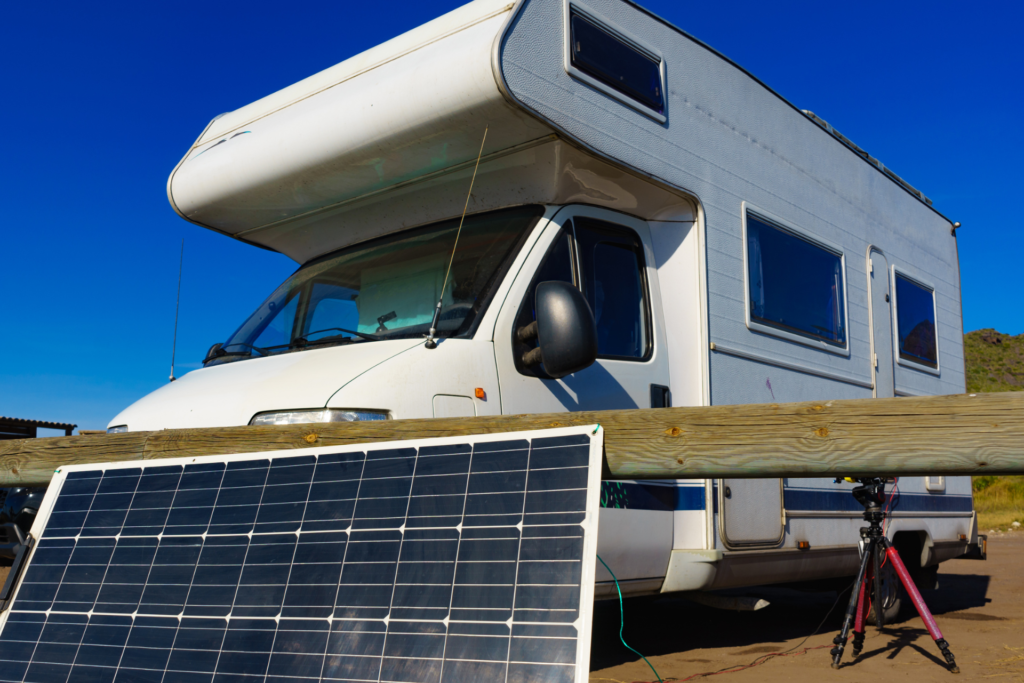
Managing Inquiries And Negotiating The Sale Of Your Caravan
When selling a caravan, managing inquiries and negotiating with potential buyers are critical steps. Whether it’s responding to questions, arranging viewings, or navigating price discussions, being well-prepared can make the process smoother and more successful. Below is a guide to help you handle these stages effectively, ensuring you secure a good deal while maintaining professionalism.
Responding to Potential Buyers
One of the first interactions you’ll have with buyers is through inquiries. Whether these come via email, phone, or social media, the key is to respond promptly and professionally. Buyers are more likely to move forward with someone who communicates clearly and quickly.
- Be Prompt and Professional: Timely responses not only create a good first impression but also show that you’re serious about selling. Make sure you’re available to answer questions within a reasonable time frame. If you delay your responses, you risk losing the interest of potential buyers.
- Prepare for Common Questions: Buyers often ask similar questions, such as:
- What is the service history of the caravan?
- How old are the parts, and have they been replaced recently?
- What condition is the caravan in, inside and out?
Being prepared with accurate and detailed answers will save you time and help build trust with potential buyers. This level of transparency shows that you are an honest seller, which increases buyer confidence.
Handling Viewings
Arranging a viewing is an essential step in the selling process. Ensuring the viewing goes smoothly requires planning, both for safety and presentation. Here are a few tips to make this process as hassle-free as possible.
- Safety First: When arranging viewings, consider safety. If possible, have someone accompany you, especially if the buyer is a stranger. Meet in a public place if feasible, or let someone know where and when the viewing will take place. You can also opt to show the caravan during the day to avoid any risks associated with nighttime viewings.
- Documents to Have Ready: Before potential buyers arrive for a viewing, make sure you have the following documentation:
- Warrant of Fitness (WOF): This is a key document for proving the caravan’s roadworthiness.
- Registration Papers: Ensures that the vehicle is legally registered.
- Ownership Documents: These prove that you are the legal owner of the caravan and have the right to sell it.
- Be Prepared for Test Drives: If your caravan is drivable, buyers may want to take it for a test drive. Before allowing this, ensure that the buyer has a valid driver’s license, and always accompany them on the test drive. This is not only a precaution but also an opportunity for you to highlight the caravan’s best features.
Negotiation Tips
Negotiating the price is often the trickiest part of the selling process. Buyers will usually try to get the best deal possible, so it’s important to be prepared for negotiation.
- Handling Low-Ball Offers: It’s common for buyers to start with offers below your asking price. Rather than dismissing these offers outright, remain respectful and professional. Politely decline if the offer is far below what you’re willing to accept, but keep the conversation open for further negotiation.
- Set Your Lowest Acceptable Price: Before negotiating, decide on the lowest price you’re willing to accept. This helps you avoid selling for less than the caravan is worth. While flexibility is key, don’t feel pressured to drop your price too low. Knowing your minimum acceptable price will help you stay firm during negotiations.
- Reach a Win-Win Agreement: The goal of any negotiation should be to reach a mutually beneficial agreement. Sometimes, offering small incentives can sweeten the deal and make the buyer feel like they’re getting a great value. For example, you could include camping gear, maintenance tools, or other useful accessories in the sale. Offering perks like these can make the buyer more willing to meet your asking price or close to it.
Successfully managing inquiries and negotiating the sale of your caravan requires a combination of clear communication, preparation, and a strategic approach to negotiations. By being prompt and professional, ensuring safe and smooth viewings, and employing smart negotiation tactics, you can close the sale confidently and with a sense of satisfaction.
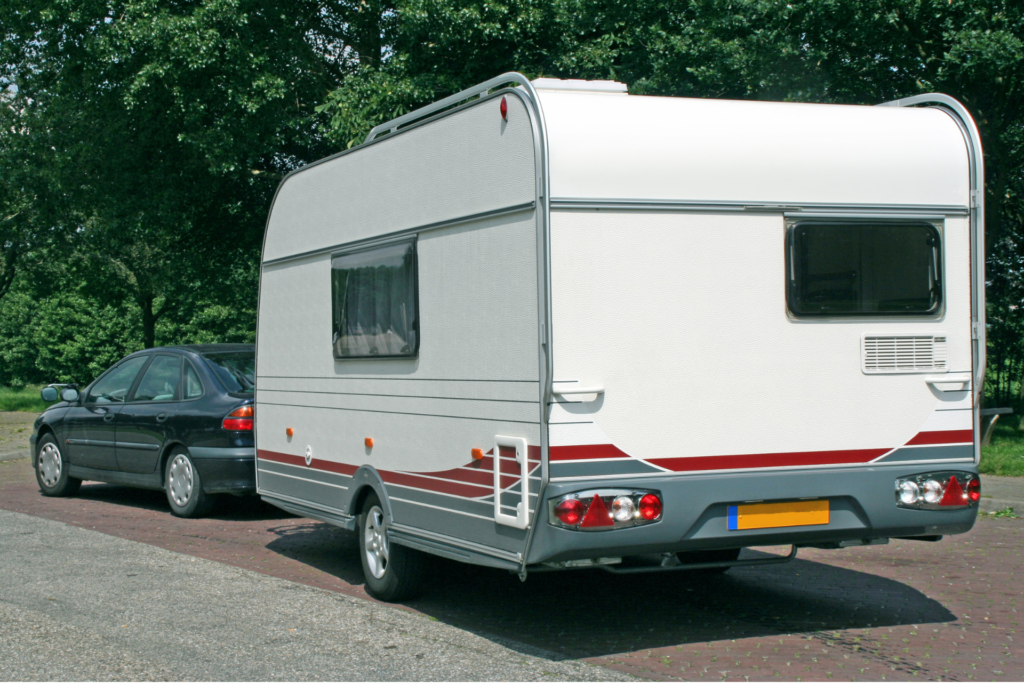
Finalizing The Sale Of Your Caravan
When selling a caravan, the final steps are crucial to ensure everything goes smoothly. It’s more than just shaking hands with the buyer there are specific legal and practical actions you need to complete. Here’s a detailed look at what you need to do when finalizing the sale of your caravan in New Zealand.
Completing Paperwork
One of the most important aspects of finalizing the sale is completing the necessary ownership transfer paperwork. In New Zealand, this process is overseen by the New Zealand Transport Agency (NZTA). Both the buyer and seller need to take action to update the records and ensure the caravan is officially transferred to its new owner. Here are the key steps include.
- Notify the NZTA: As the seller, you’re responsible for completing the ownership transfer forms with the NZTA. This can often be done online, making it a quick and convenient process. However, it’s essential to ensure all the details are accurate and submitted promptly.
- Provide All Necessary Documents: To ensure the buyer has peace of mind and everything they need for their new purchase, be sure to hand over all essential documents. This includes any warranties still valid for the caravan, receipts for major purchases or repairs, and service records that detail the caravan’s maintenance history. These documents help prove the caravan’s condition and provide a smooth transition for the buyer.
Safe Payment Methods
Receiving payment for your caravan is the moment you’ve been working toward, but it’s crucial to do it safely. Scams can occur, especially with large transactions, so taking the right precautions is key. Here are the safest methods to receive payment.
- Bank Transfer: This is one of the most secure ways to receive payment. It allows you to verify that the funds have been deposited into your account before you release the caravan to the buyer. Always double-check with your bank to ensure the transfer is complete and not subject to any holds.
- Certified Cheque: A certified cheque is another secure option. Unlike regular personal cheques, certified cheques guarantee the funds are available, as the buyer’s bank verifies the cheque. However, you should still contact the issuing bank to confirm the cheque’s authenticity.
- Avoiding Scams: Never release the caravan before the full payment is in your possession. A common scam involves buyers requesting to take the caravan before payment clears. Always wait until the funds are securely in your account to avoid any risks.
Cancelling Insurance and Updating Records
Once the caravan sale is complete and the paperwork is finalized, there are a few final tasks to ensure you’re no longer responsible for the vehicle.
- Cancel or Transfer Insurance: Contact your insurance provider to cancel your caravan’s coverage. If you’re purchasing another caravan, you might want to transfer the policy to the new vehicle instead. Make sure to do this as soon as the sale is final to avoid paying for unnecessary coverage.
- Notify Relevant Authorities and Memberships: After selling your caravan, you must notify local authorities and update any caravan-related memberships. This might include your local council if they keep records of caravans or clubs you’re a part of. Updating these records ensures the new owner assumes all future responsibilities.
By following these steps, you can complete your caravan sale with confidence, ensuring both you and the buyer have a smooth and secure transaction.

FAQs: About Best Way To Sell A Caravan NZ
How much does it cost to sell a caravan on Trade Me?
How do I determine the right price for my caravan?
What documents do I need to sell a caravan in NZ?
Should I sell my caravan privately or through a dealer?
What is the best time of year to sell a caravan in New Zealand?
How can I make my caravan listing more attractive?
How do I avoid scams when selling my caravan?
How long does it usually take to sell a caravan?
Do I need to get a new Warrant of Fitness before selling my caravan?
Can I sell my caravan if it has outstanding finance?
Conclusion
Selling your caravan in New Zealand doesn’t have to be a daunting task if you take the right steps. Proper preparation is crucial, from cleaning and maintaining your caravan to gathering all necessary paperwork, ensuring it’s ready for sale. Fair pricing is equally important by researching the market and understanding the value of your caravan, you can set a price that attracts buyers while still giving you a fair return. Choosing the right platform for selling, whether it be online classifieds, specialized caravan dealerships, or social media, can make a significant difference in reaching the right audience quickly and efficiently. By taking these considerations into account, you’ll be well on your way to a smooth and successful sale. Don’t forget to share your own experiences or any questions you may have in the comments below—your insights could help others navigating the same process.

